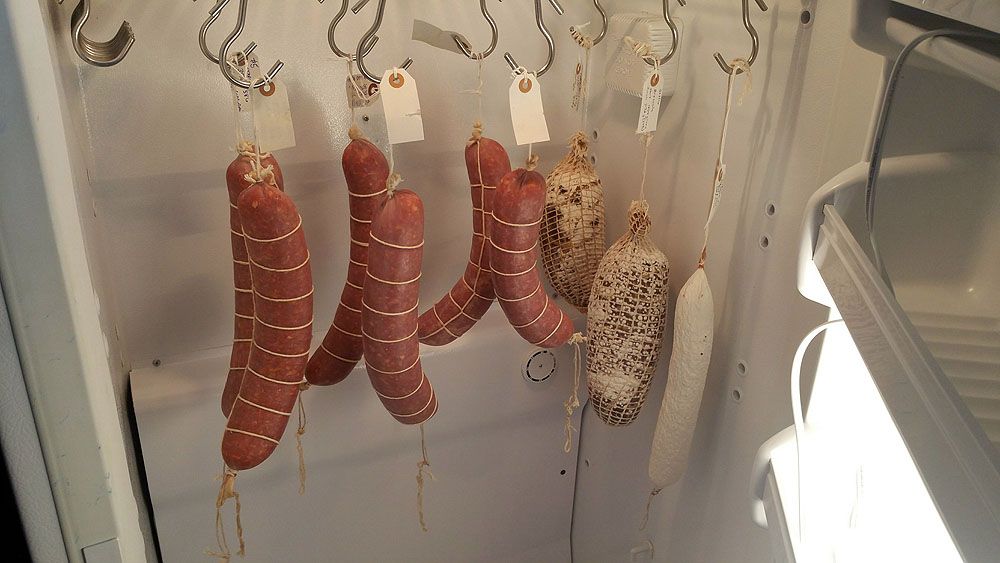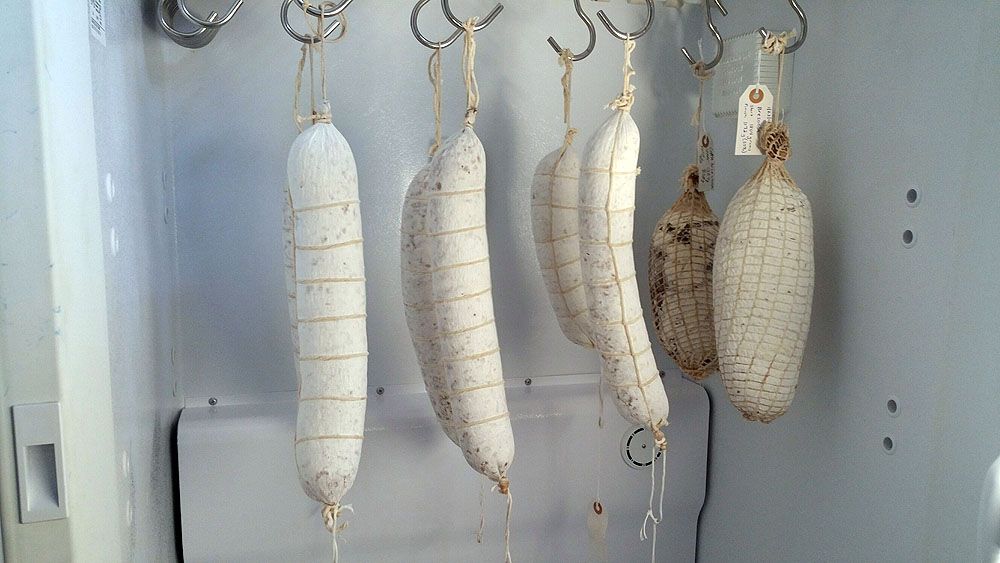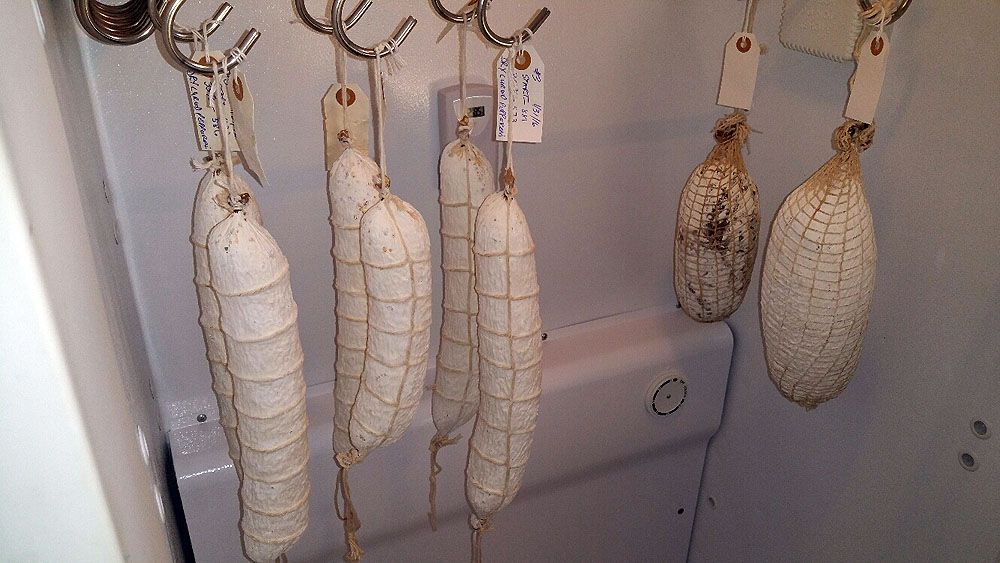It probably went bad and needs to be disposed of in a special Hazmat container. I can supply one that is postage paid and pre-addressed.

All Kidding aside, the ammonia smell is normal and should subside within a week or so.
Also your air exchange is tied to your humidifier. With 10 lbs of new product being added the humidity level can remain higher and the air exchange may not be running as often or at all, so you are more aware of the smell.
You can add a charcoal filter on the exit opening if the smell offends anyone.
What Chris said:
redzed wrote:Having said that, while the heavy handedness with paprika might have something to do with the taste, and additional moisture for the slow rate of drying, nether have anything to do with the ammonia smell. The primary cause of this is overactive proteolysis. It's beyond me to describe in length and detail what proteolysis is, but in a nutshell, it is the breakdown of proteins into smaller peptide chains and amino acids. This is accomplished by enzymes that reduce proteins into smaller amino acids. When this breakdown goes beyond this stage and goes on to also breakdown those same amino acids, ammonia is released as a by-product. Ammonia is produced by deamidation and dehydrogenation of protein by deamidase and deaminase enzymes secreted by both cocci strains of bacteria and molds and yeasts. In your situation the culprits are Staphylococcus carnosus and Staphylococcus xylosus in the B-LC-007 and the mould in Bactoferm 600. Moulds produce the ammonia odor caused by their high rate of proteolytic activity in the final stages of ripening
So in layman's language, proteolysis is good, it contributes to flavour, aroma, colour and texture, but when it's excessive, it needs to be railed in. Moulds are also desirable but when allowed to bloom uncontrollably, they too can be responsible for developing undesirable characteristics in the sausage. So a while some ammonia by-product is normal for a short period of time, too much of it can spoil your sausage.






